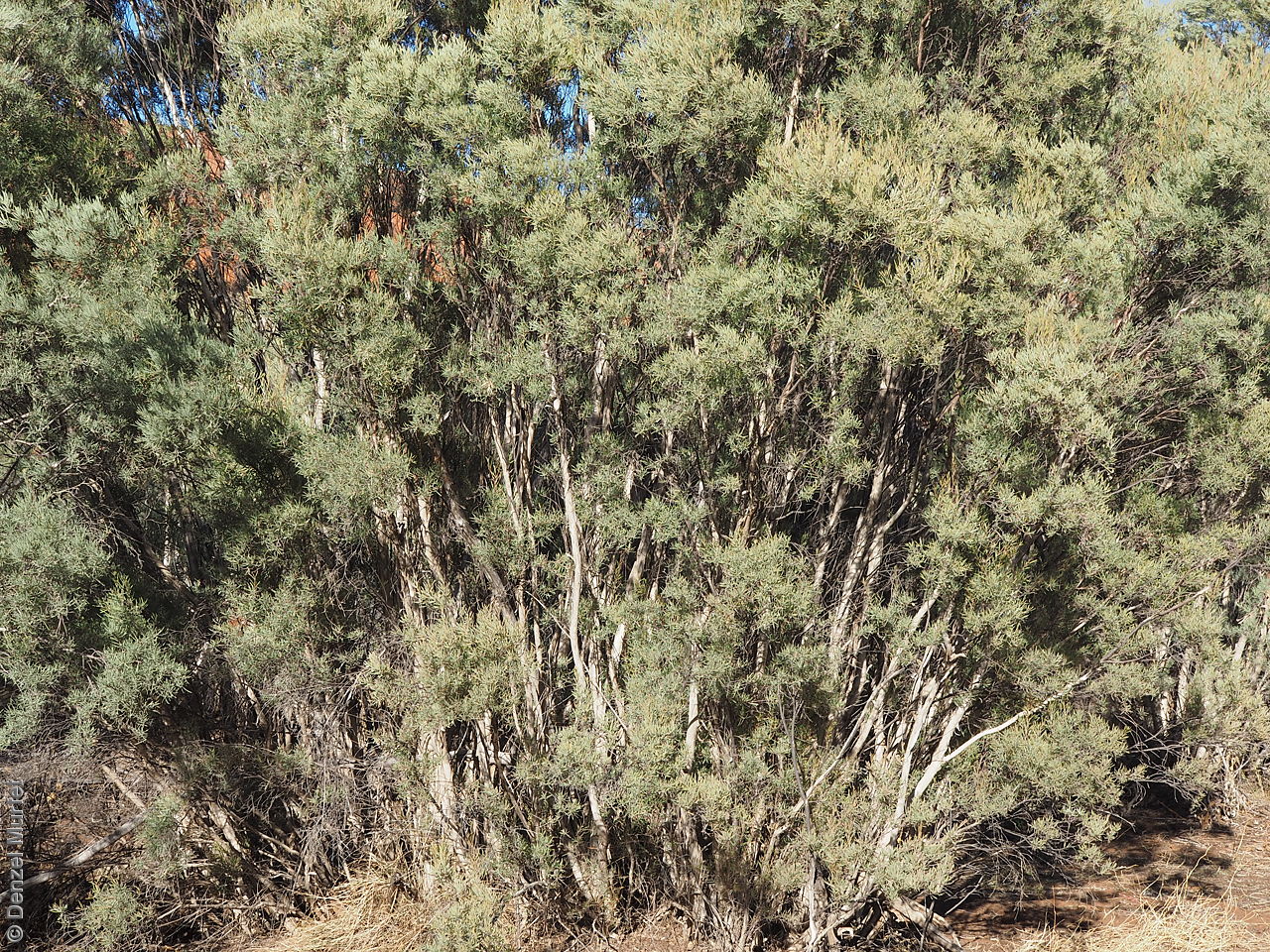
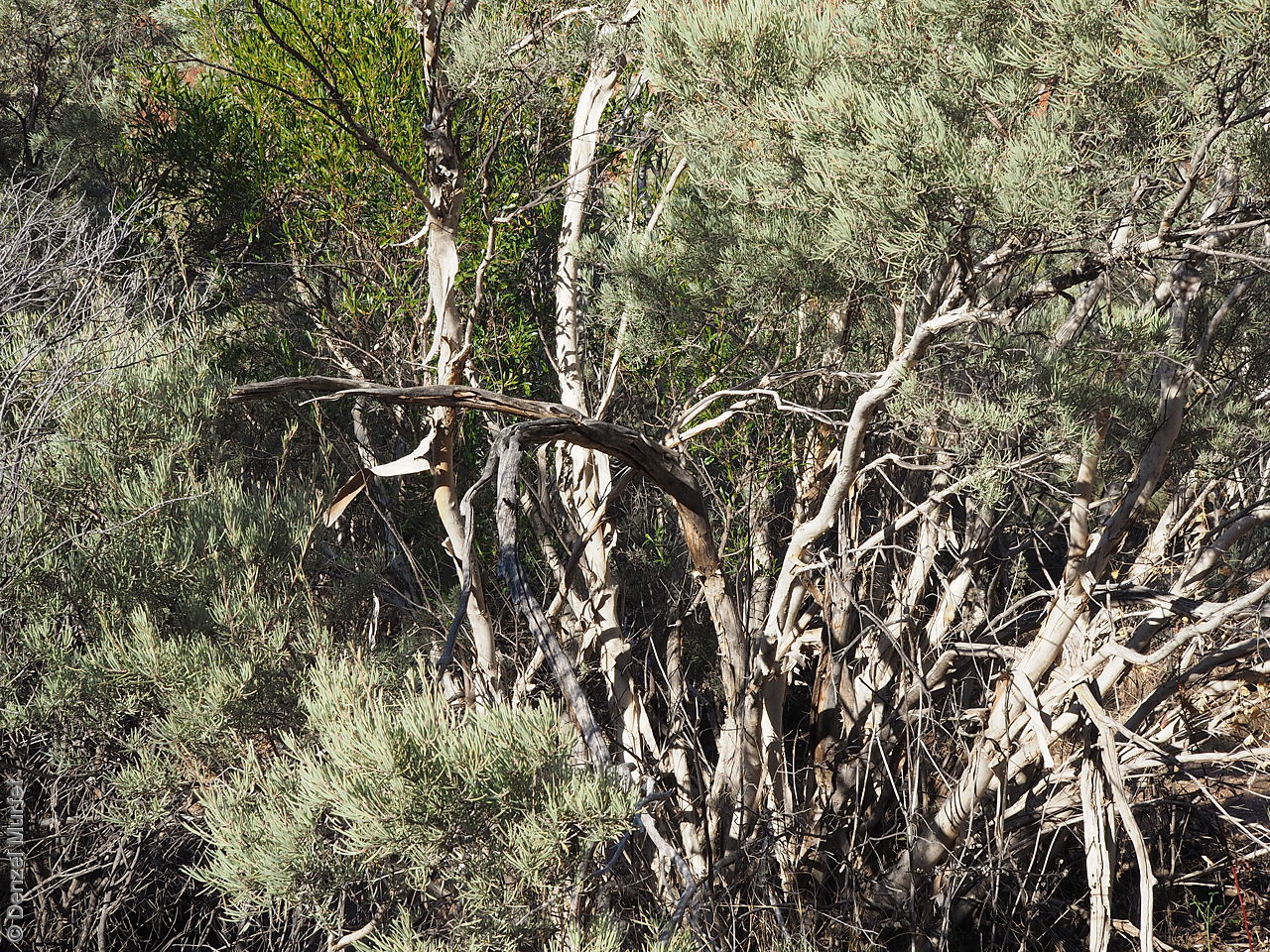
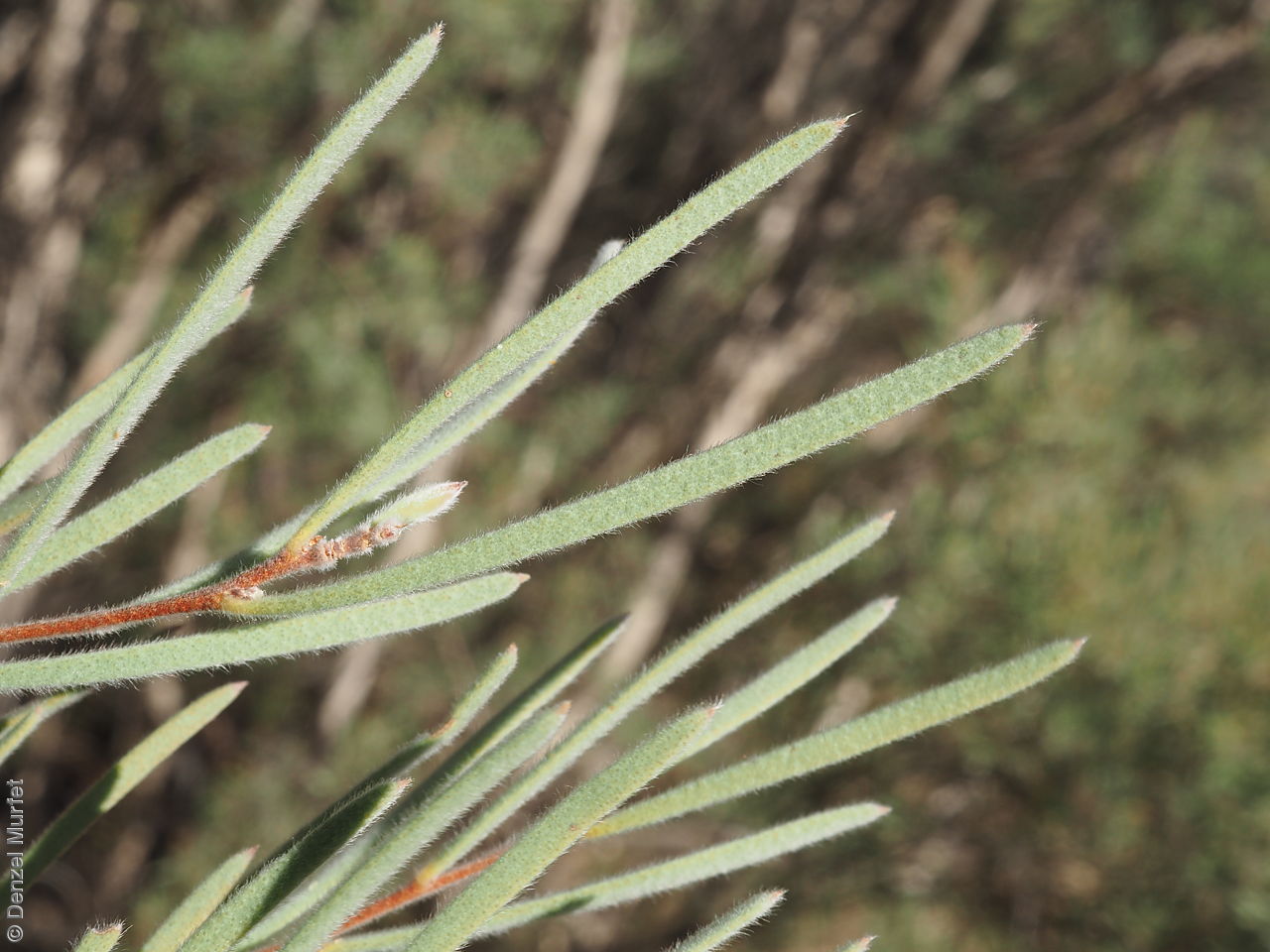
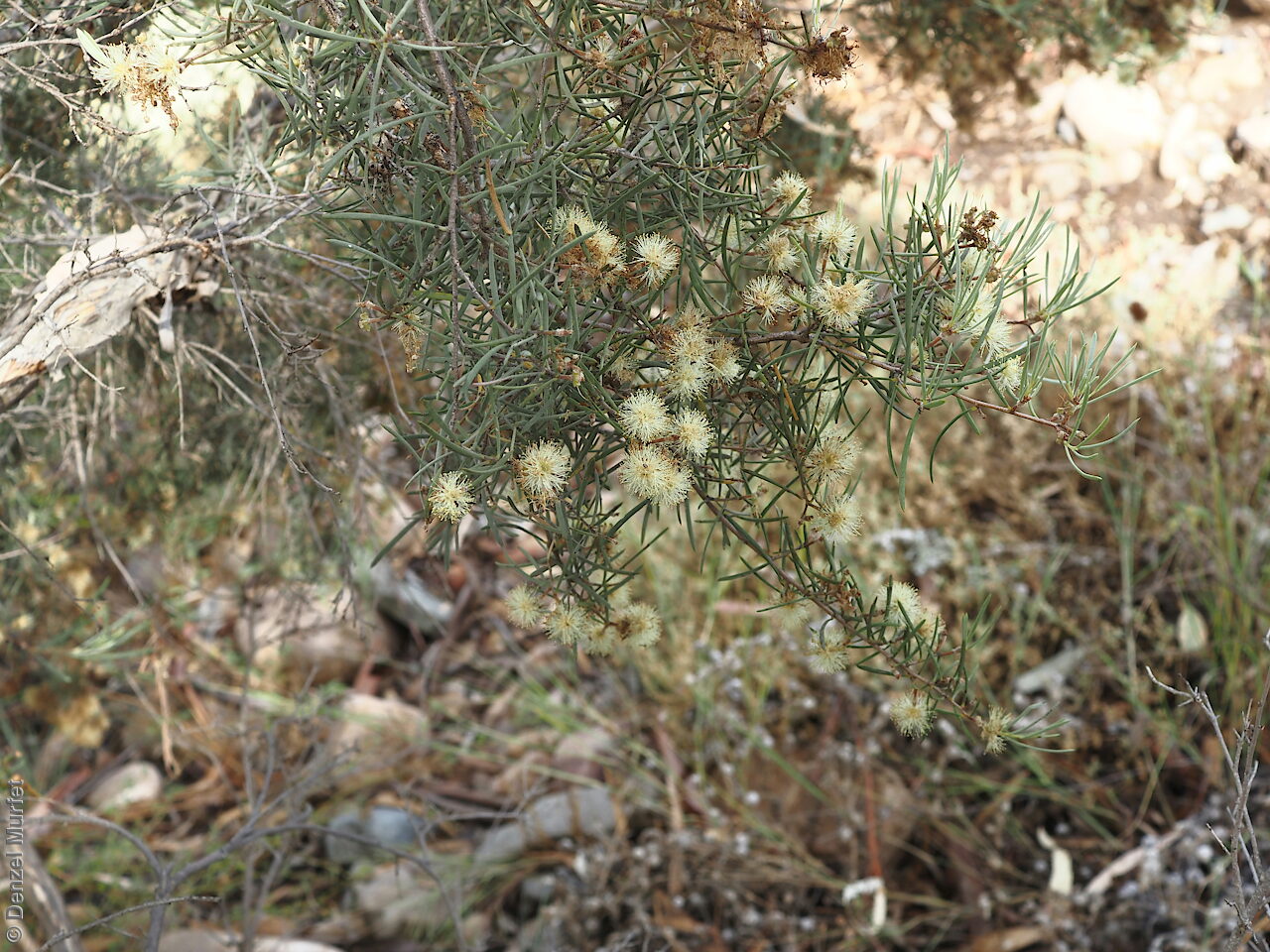
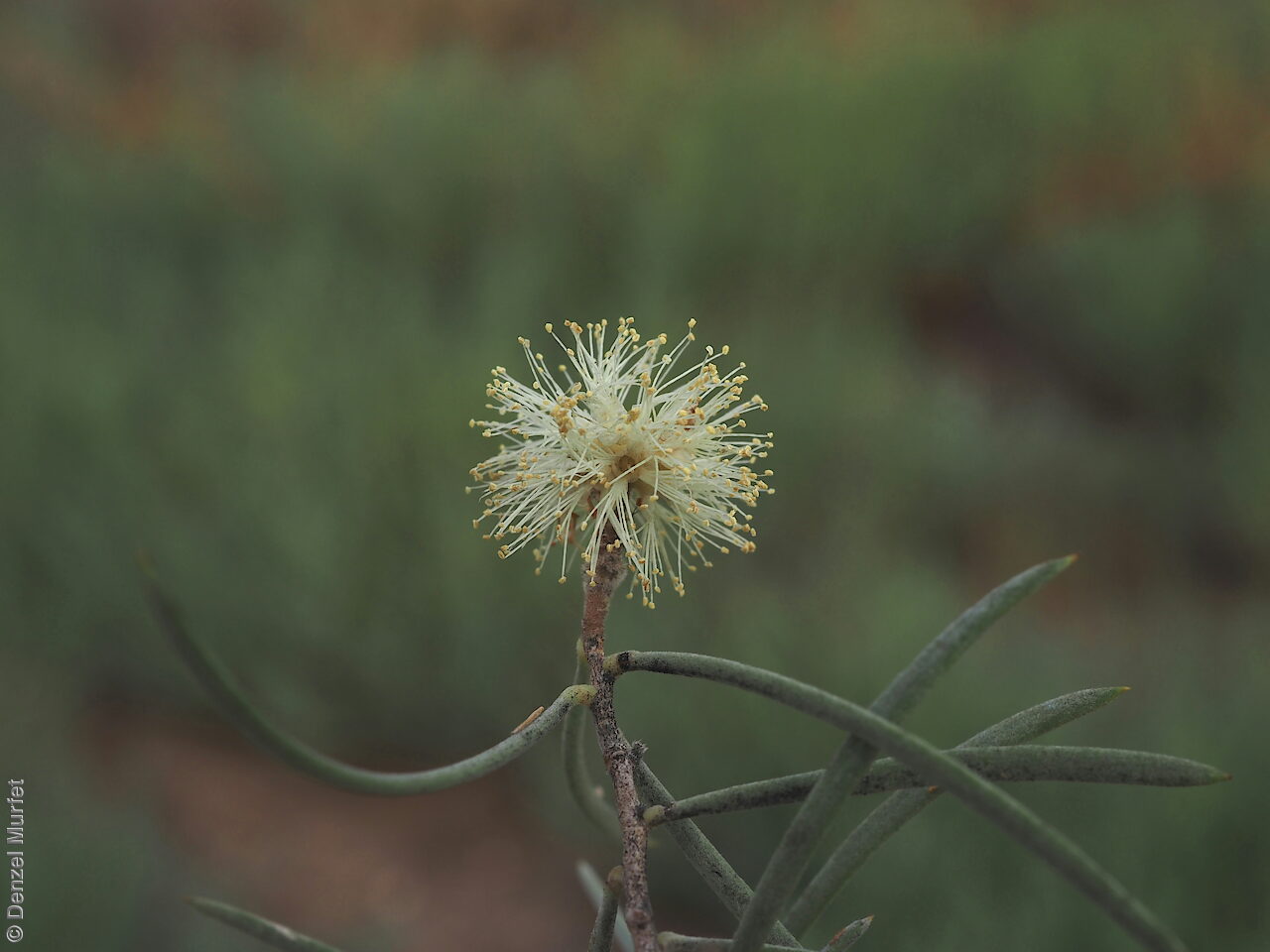
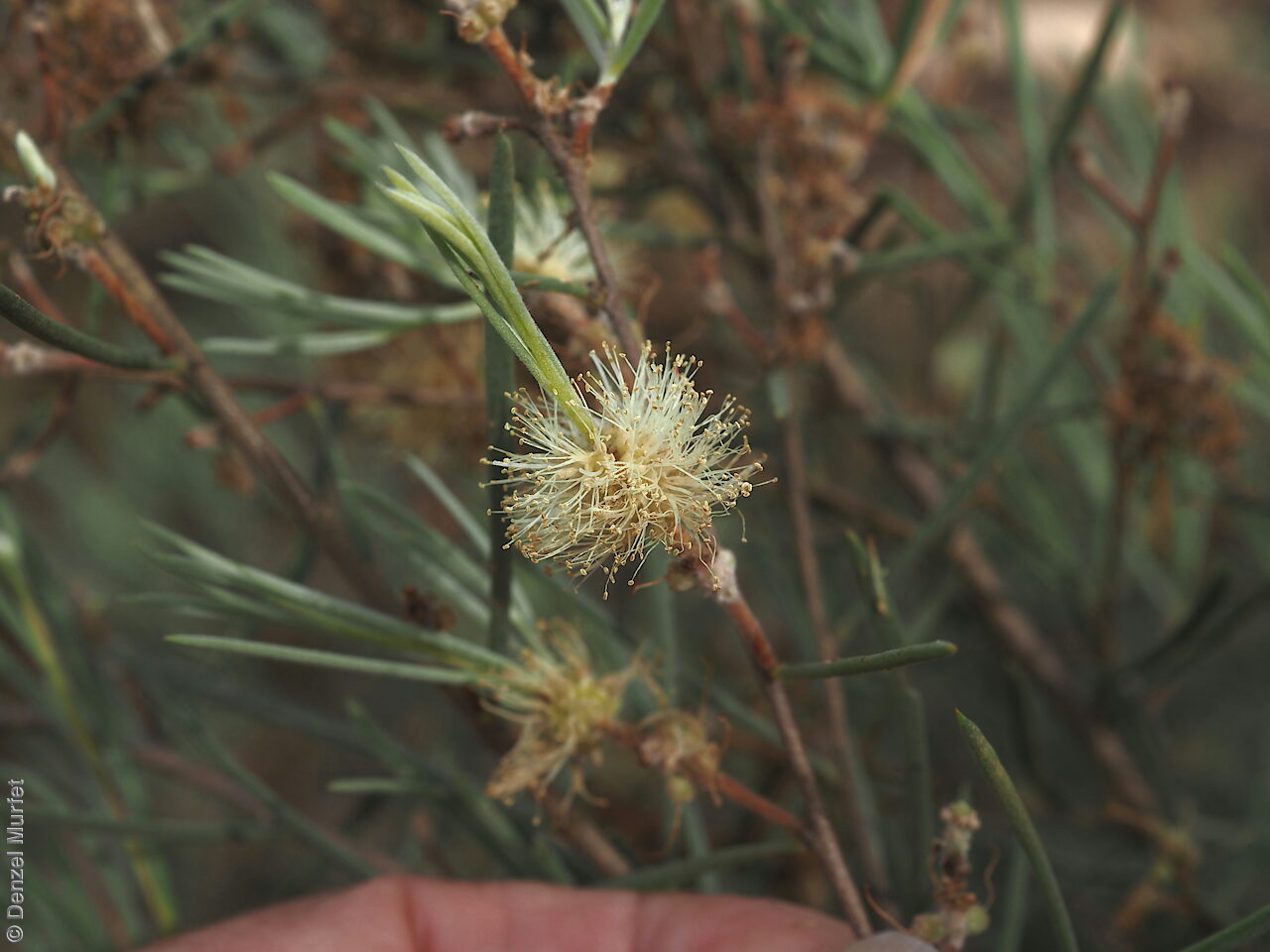
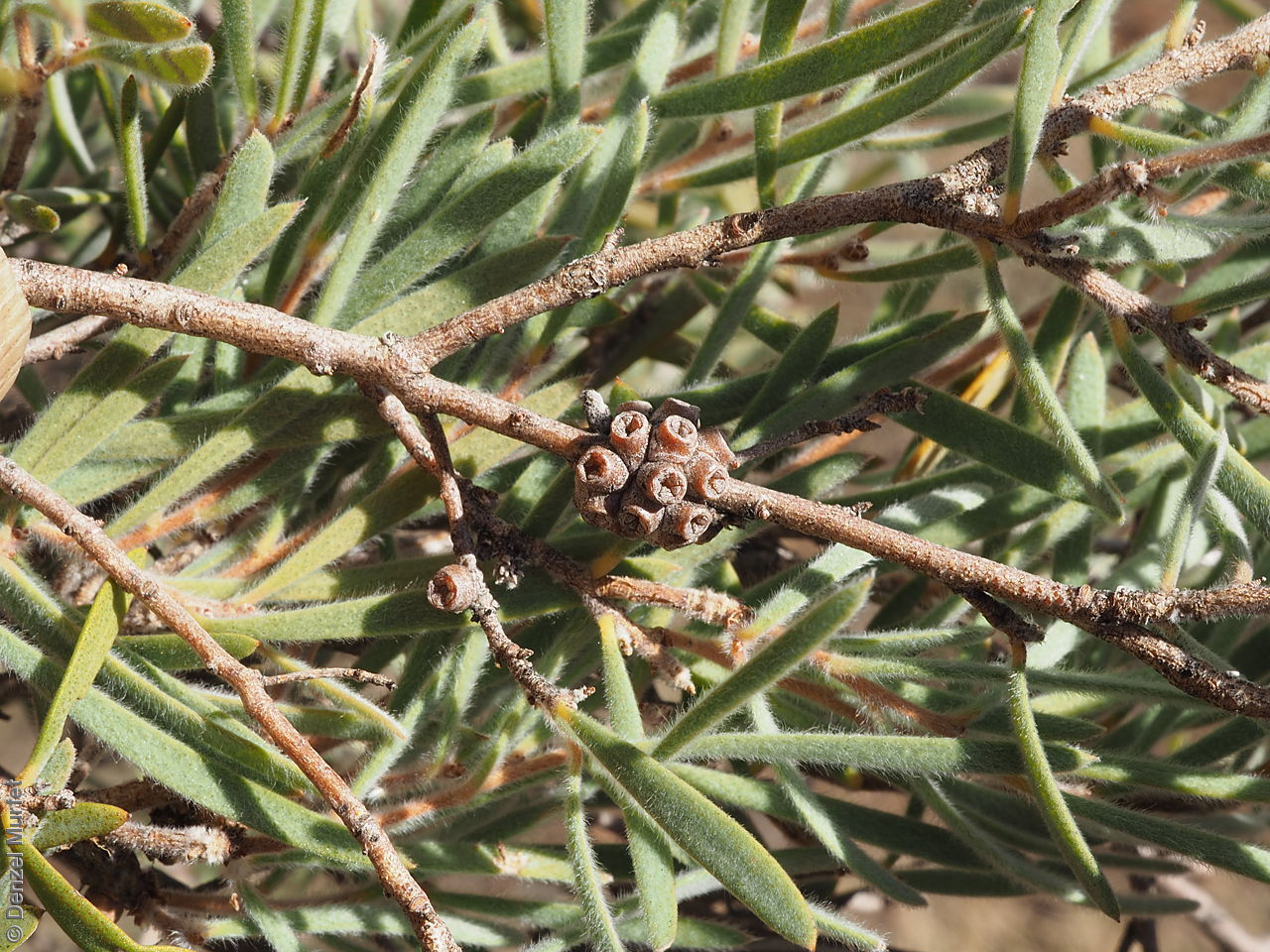
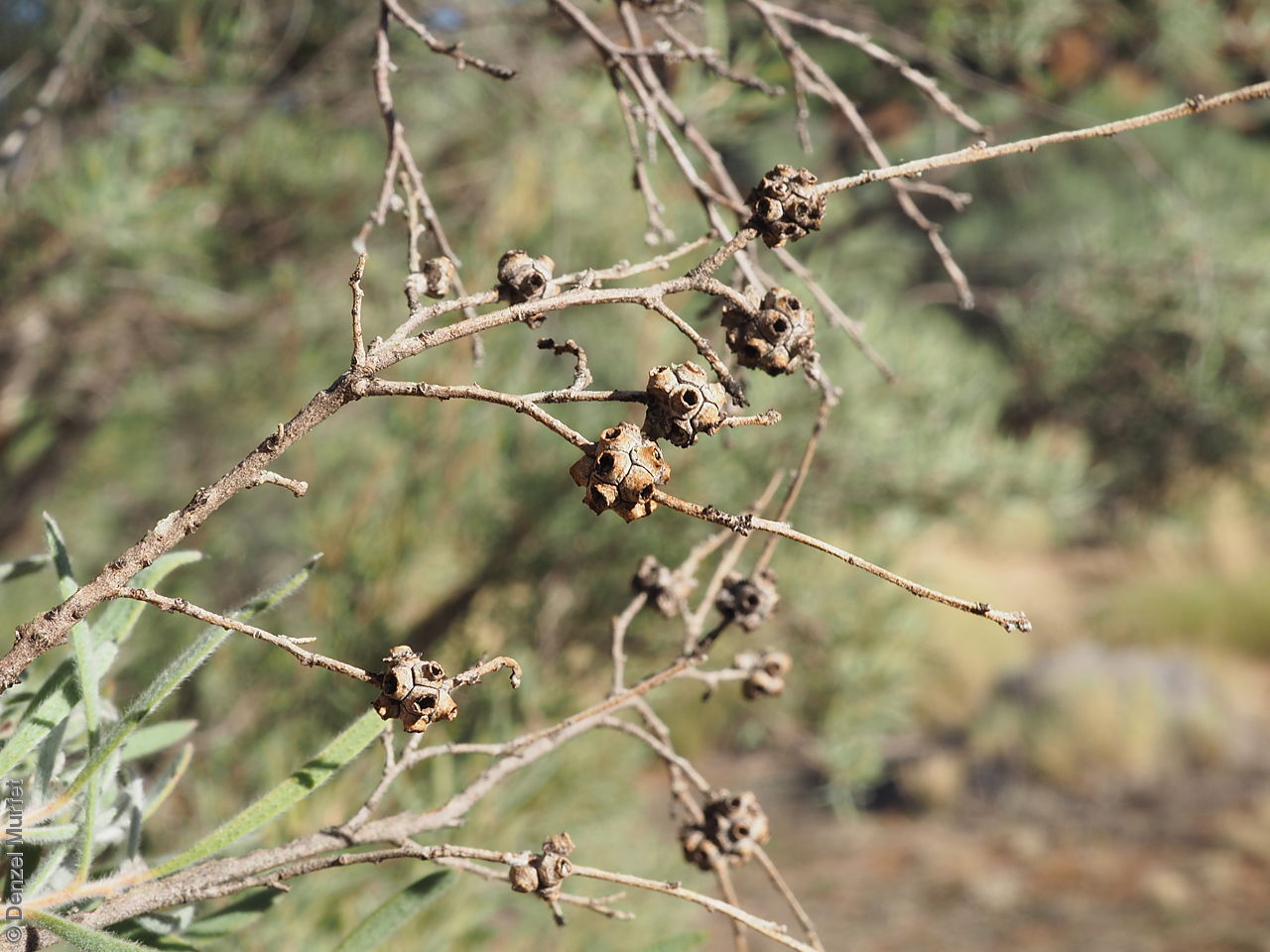
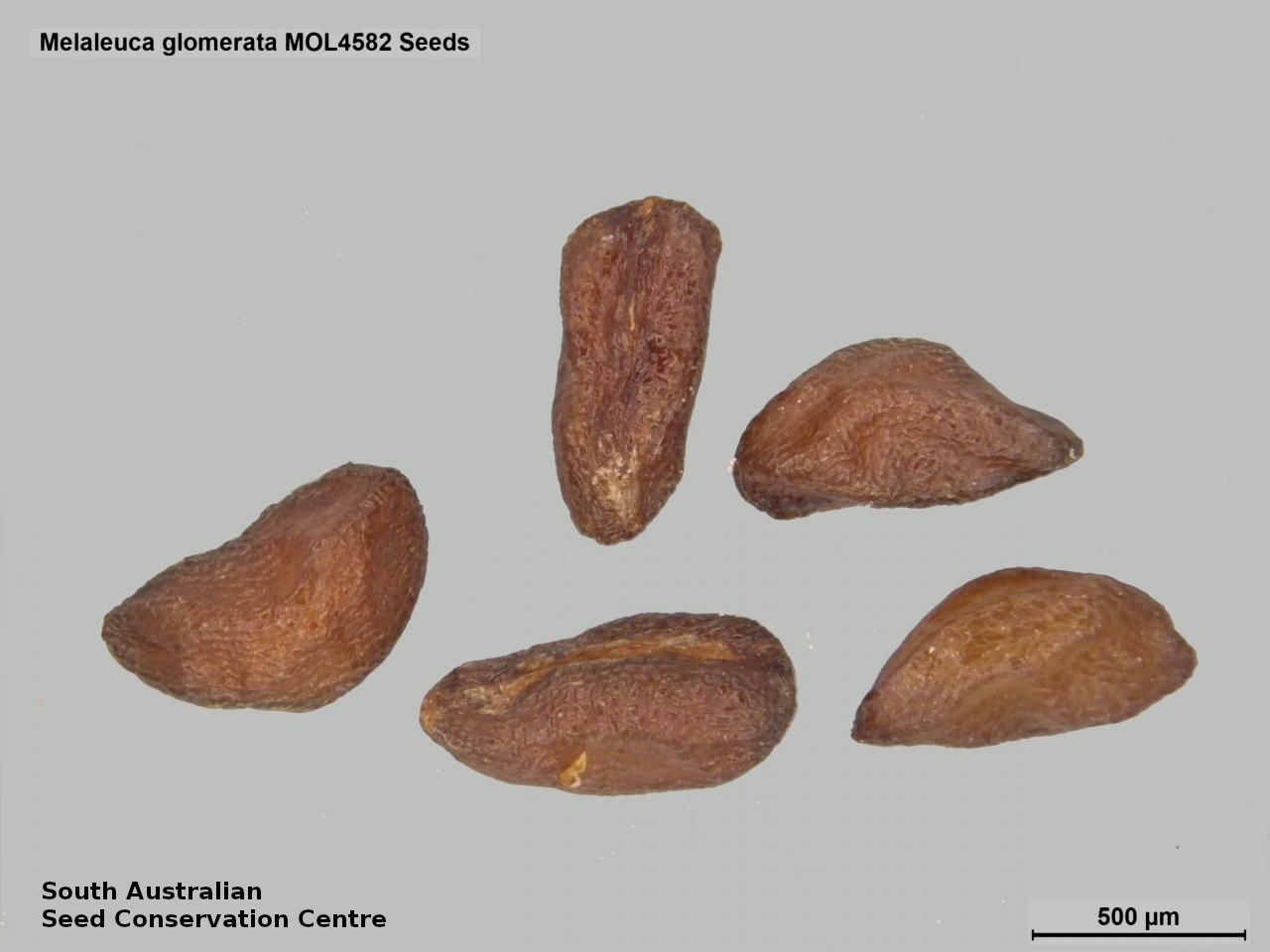

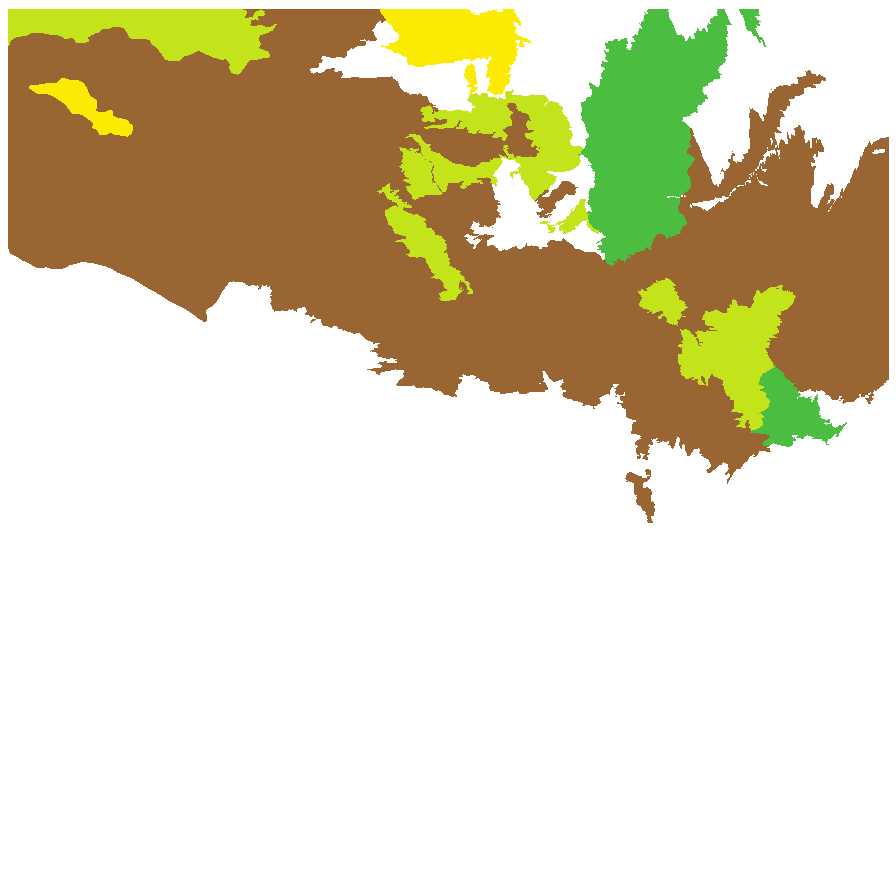
Botanical art
Prior names
Melaleuca hakeoides
Common names
Desert Honey-myrtle
Inland Paper-bark
White Tea-tree
Etymology
Melaleuca, from the Greek 'melas,' meaning black and 'leucon', meaning white, alluding to the contrasting colours of the bark of the first species described, which is said to have had white branches against a black trunk. Glomerata, from the Latin 'glomeratus', meaning heap or having been made into a ball, referring to the globular flower-spike.
Distribution and status
Found in the northern part of South Australia growing on red sand, clay or sandy loam in rocky river beds, shallow depressions and sandy flats. Also found Western Australia, Northern Territory, Queensland and New South Wales. Native. Common in South Australia. Uncommon in Queensland and New South Wales. Common in the other States.
Herbarium regions: North Western, Lake Eyre, Gairdner-Torrens, Flinders Ranges, Eastern
NRM regions: Alinytjara Wilurara, South Australian Arid Lands
AVH map: SA distribution map (external link)
Plant description
Shrub to 8 m high with grey hairy stems. Leaves alternate, linear to narrowly oblanceolate to 50 mm long and 2 mm wide; sessile, hairy. Inflorescence in dense terminal and axillary globular heads with yellow flowers. Flowers in winter and spring. Fruits are tawny smooth capsule to 2.5 mm diameter; truncate, slightly compressed; in dense clusters, mostly near the bases of woody branches. Seeds are tiny brown ovoid seed to 1 mm long and 0.5 mm wide. Seed embryo type is folded.
Seed collection and propagation
Collect seeds between January and December. Collect capsules that are large and hard, with closed valves. Place the capsules in a tray and leave to dry for at least two weeks or until all the valves are open. Then place all the capsules into a bucket with a lid if possible and shake hard to dislodge the seeds from the capsules. Use a sieve to separate the seeds from the capsules. The fine material will contain the seeds and other flowering material. It is very difficult to separate the seeds from this other material as the size, shape and weight are very similar, however the seeds will be a darker brown. Store the seeds with a desiccant such as dried silica beads or dry rice, in an air tight container in a cool and dry place. From one collection, the seed viability was high, at 100%. Seeds are non-dormant, viable seed should germinate readily.
| Location | No. of seeds (weight grams) | Number of plants | Date collected | Collection number Collection location | Date stored | % Viability | Storage temperature |
|---|---|---|---|---|---|---|---|
| BGA MSB | 14,000 (1.85 g) 14,000 (1.85 g) | 30 | 23-Oct-2004 | MOL4582 Gairdner-Torrens | 31-Mar-2006 | 100% | -18°C |
| MSB | 9,200 (0.45 g) | 50 | 3-May-2007 | RJB70984 Flinders Ranges |
Number of plants: This is the number of plants from which the seeds were collected.
Collection location: The Herbarium of South Australia's region name.
% Viability: Percentage of filled healthy seeds determined by a cut test or x-ray.